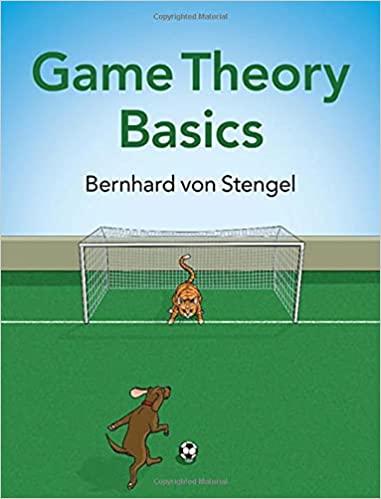We repeat the definition of the discretized ultimatum game. Let (M) be a positive integer. Player I's
Question:
We repeat the definition of the discretized ultimatum game. Let \(M\) be a positive integer. Player I's possible actions are to ask for a number \(x\), called his demand, which is one of the (integer) numbers \(0,1,2, \ldots, M\). In response to this demand, player II can either accept (A) or reject (R). When player II accepts, then player I will receive a payoff of \(x\) and player II a payoff of \(M-x\). When player II rejects, both players receive payoff zero.
(a) Draw the game tree for this game, as an extensive game with perfect information, for \(M=3\).
(b) What is the number of pure strategies in this game, for general \(M\), for player I and for player II? What is the number of reduced pure strategies in this game, for player I and for player II?
(c) Determine all subgame-perfect equilibria of the game in pure strategies.
(d) Determine all equilibria (not necessarily subgame-perfect) of this game in pure strategies.
(e) Determine all subgame-perfect equilibria of this game where both players may use behavior strategies, in addition to those in (c).
Step by Step Answer:






